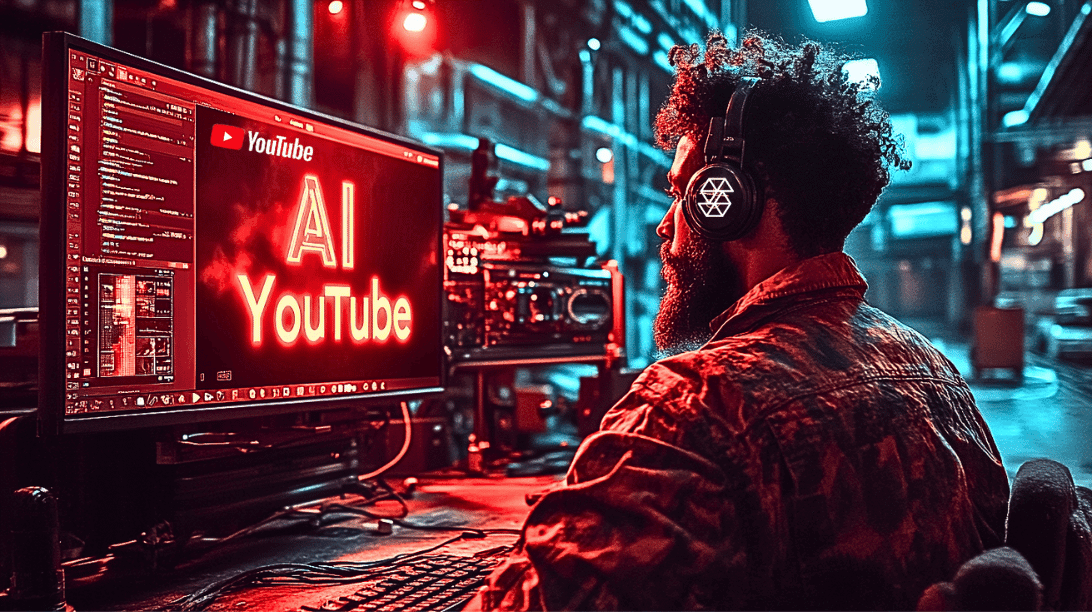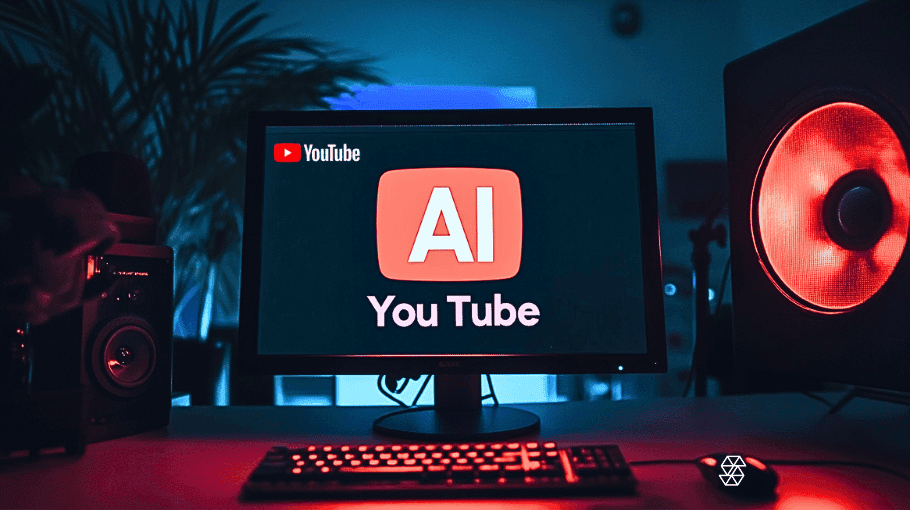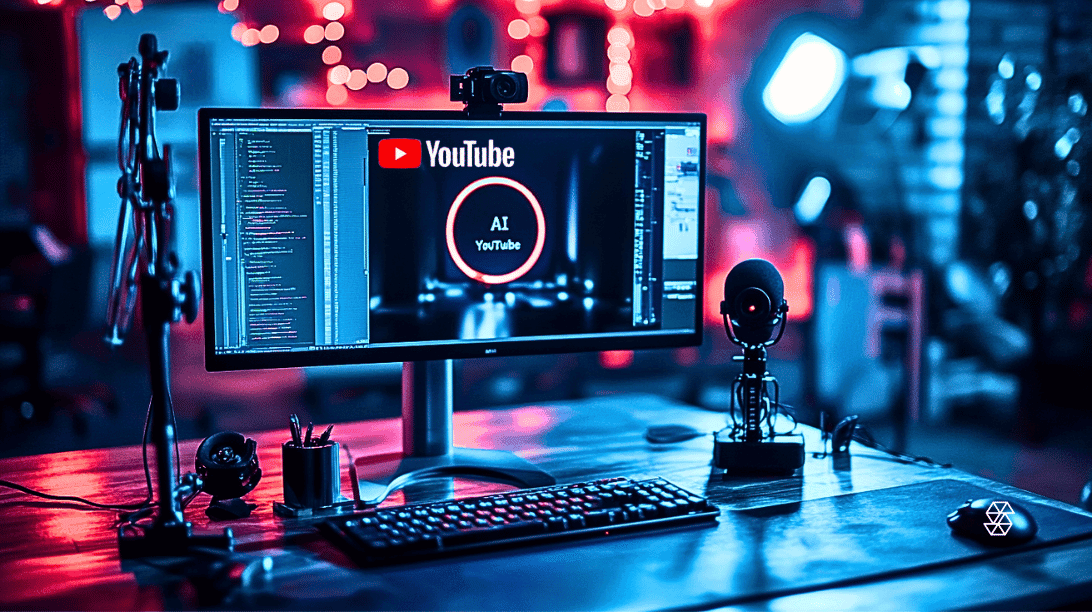What is Generative AI?
What is Generative AI?

If you have paid any attention to tech news lately, you’ve almost certainly heard of generative AI, which is a class of artificial intelligence (AI) algorithms that are designed to generate new content such as images, text, music, or some other form of data. This type of AI differs from others that are designed for specific tasks like recognizing objects in an image or translating language. When it comes to generative AI models, they are designed to create new data that is similar to the training data.
The generative AI market is exploding, with reports showing that the global market size and share are expected to generate revenue of USD $200.73 billion by 2032. They are estimated to be valued at USD $10.63 billion in 2022, at a compound annual growth rate (CAGR) of 34.2% from 2023 to 2032.
Because of this new environment with generative AI and its potential to disrupt industries and society, it’s important to understand the technology.
How Does Generative AI Work?
Generative AI algorithms rely on neural networks to generate new data that is similar to the training data provided to the model. These neural networks, which are designed to simulate the behavior of the human brain, consist of multiple layers of interconnected nodes, with each node performing a simple computation on the data.
One of the main things you should know about generative AI is that it usually consists of two main components:
- Generator: The generator is responsible for creating new data.
- Discriminator: The discriminator is responsible for determining whether the data is real or generated.
These two components are trained together in a process known as adversarial training, where the generator tries to create data that is indistinguishable from real data, and the discriminator tries to correctly classify the data as either real or generated.
This training process helps create a generator that can produce data extremely similar to the real data. Following the successful training of the generator, it can be used to create new data that is similar to the training data, but with some degree of variation or novelty.
Applications of Generative AI
Generative AI has the potential to revolutionize many industries by allowing us to create new content that is similar to existing data, but with some degree of variation. This technology has numerous applications in fields as diverse as entertainment, healthcare, and finance.
Some of the most promising applications of generative AI include image and video synthesis, music composition, and text generation, just to name a few.
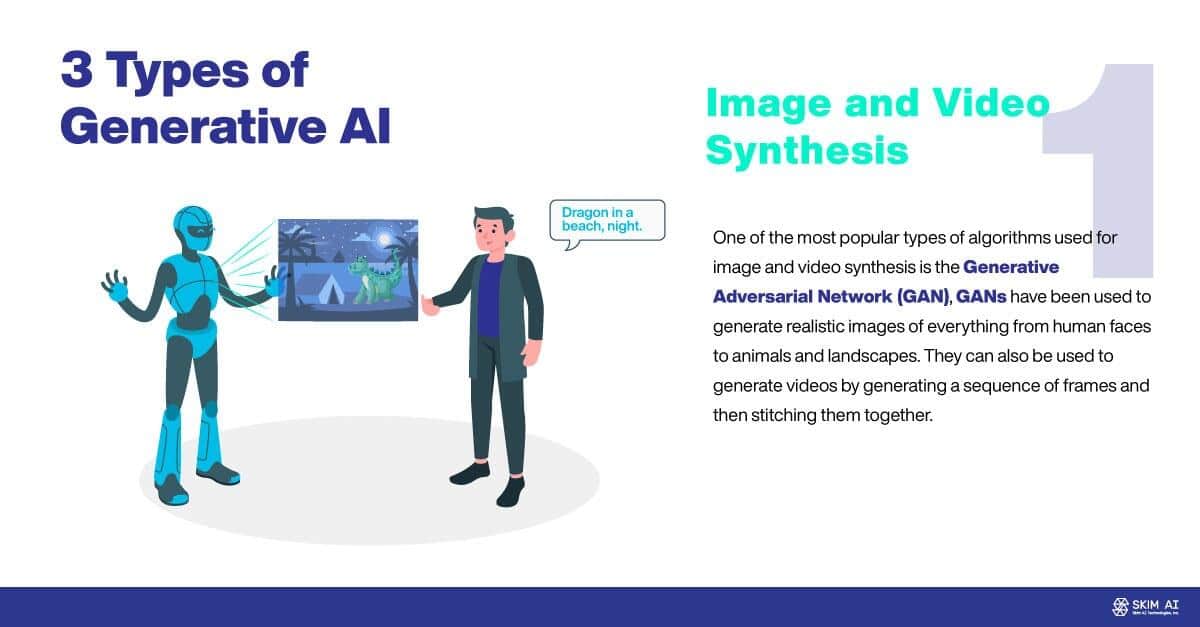
Image and Video Synthesis
One of the most exciting and rapidly developing applications of generative AI is in the field of image and video synthesis. It can be used by industries like film and entertainment to create special effects, or in the fashion industry, it can be used to develop new designs.
One of the most popular types of algorithms used for image and video synthesis is the Generative Adversarial Network (GAN), which consists of the previously mentioned generator and discriminator network.
GANs have been used to generate realistic images of everything from human faces to animals and landscapes. They can also be used to generate videos by generating a sequence of frames and then stitching them together. GAN-generated images and videos can be used for a wide range of applications in advertising, video games, and virtual and augmented reality experiences. But it’s also important to note the dangers of GAN algorithms. For example, they are the technology behind “adversarial AI attacks.”
Another one of the most notable AI technologies based on GANs is DALL-E 2, which is an advanced version of the original DALL-E model developed by OpenAI. The generator network can take a textual input (e.g. a written description) and generate an image based on that description. For example, you can tell it to create an image of a “cat in a hat,” or a “raccoon in a spacesuit,” and within seconds, you will have a completely unique image.
Audio and Music

Generative AI algorithms can also be used for audio and music composition, allowing the creation of new and unique content. This technology can be used to generate new melodies, harmonies, rhythms, and even entire musical compositions that are similar to the training data, but with some degree of variation. In the music industry, this has many potential applications, including creating new songs and remixes.
Popular types of generative AI algorithms used for audio and music composition include the Recurrent Neural Network (RNN), which is designed to process sequences of data such as music notes, and the Transformer, which can process sequences of text representing musical data.
One of the best examples of generative AI in these domains is MusicLM, which is a generative AI model that is specifically designed for music composition. It is a type of language model that is trained on a large corpus of musical data and then used to generate new musical compositions.
As the technology continues to evolve, the potential for generative AI in audio and music is vast, and we can expect to see many new and innovative applications emerge in the future.
Text Generation
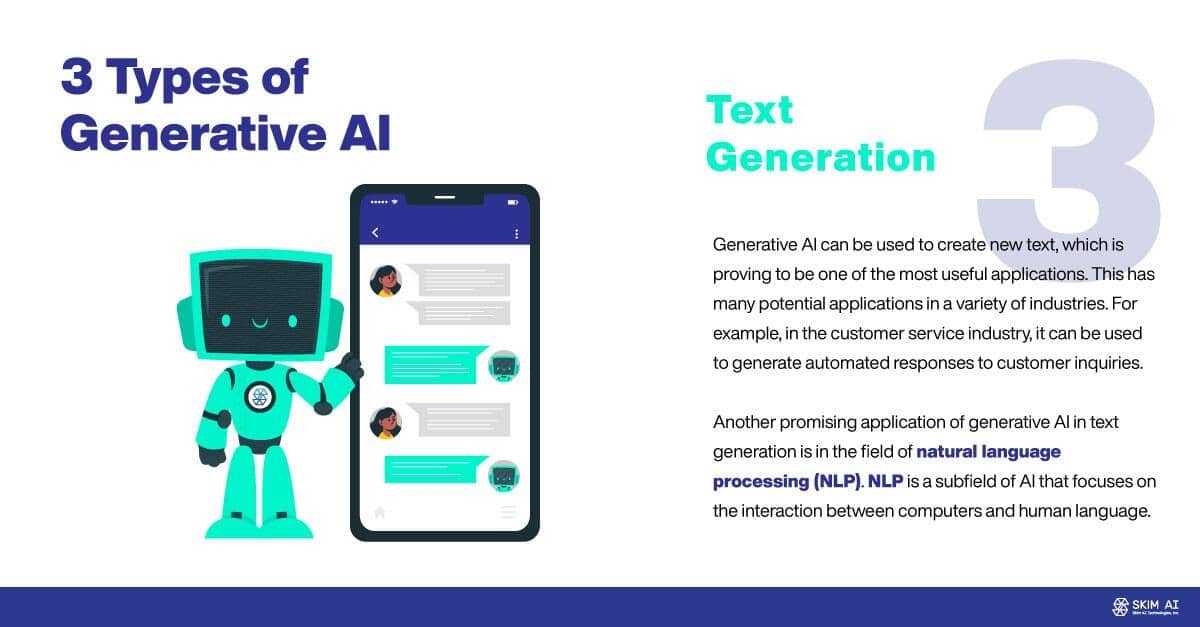
Generative AI can be used to create new text, which is proving to be one of the most useful applications. This has many potential applications in a variety of industries. For example, in the customer service industry, it can be used to generate automated responses to customer inquiries. This can help to improve the efficiency of customer service operations by providing quick and accurate responses to common inquiries.
Another promising application of generative AI in text generation is in the field of natural language processing (NLP). NLP is a subfield of AI that focuses on the interaction between computers and human language. Generative AI models can be used to create chatbots and virtual assistants that can communicate with humans in a more natural and human-like way.
The best text generation model to date is ChatGPT, which is a large language model created by OpenAI that uses deep learning to process and understand human language. It makes up the GPT (Generative Pre-Trained Transformer) family of language models, and it is designed to have conversations with humans and to answer a wide range of questions on a variety of topics. The model generates these responses based on natural language inputs, which are in the form of text prompts.
Revolutionizing Industry and Society
Generative AI has the potential to revolutionize many industries by allowing us to create new content that is similar to existing data. The global market for generative AI is growing at an unprecedented rate, with a wide range of potential applications in fields as diverse as entertainment, healthcare, and finance.
Image and video synthesis, music composition, and text generation are just a few examples of the many potential applications of generative AI.
In each of these fields, generative AI has the potential to transform the way we create and consume content, by allowing us to generate new and unique content that is tailored to our specific needs and preferences.
As the technology continues to evolve, we can expect to see many new and innovative applications of generative AI emerge in the future. However, it is important to recognize that with great power comes great responsibility, and we must be vigilant in ensuring that these technologies are used for good and not for harm. By working together to develop and implement ethical guidelines for the use of generative AI, we can ensure that this technology has a positive impact on the world and benefits all of humanity.




